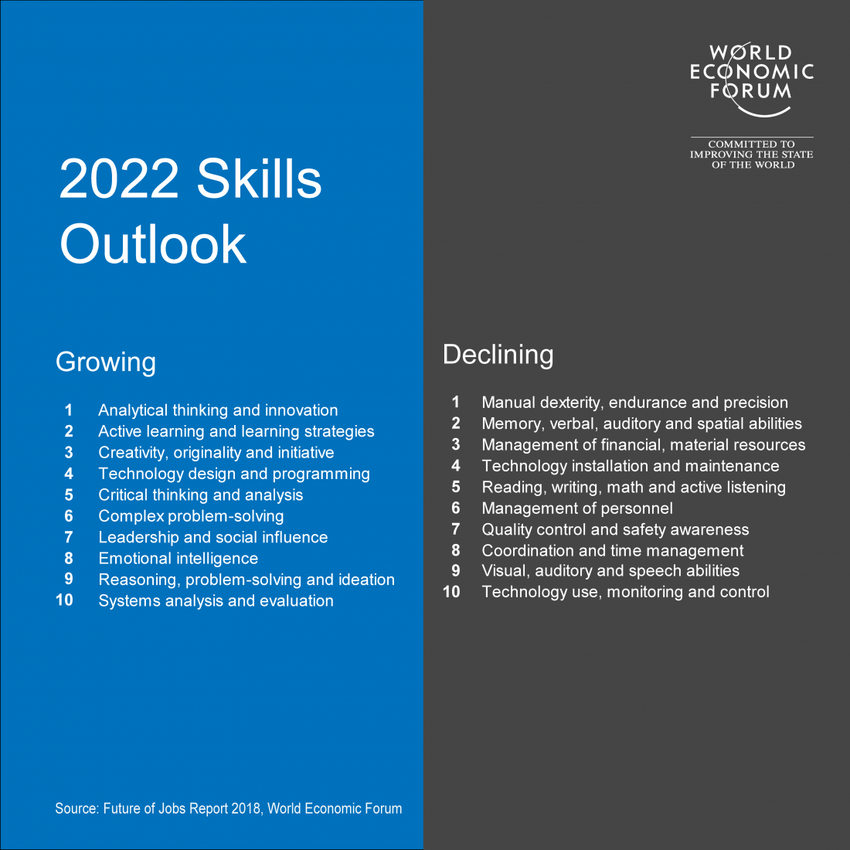The world in 2030 and beyond
The ways people learn, interact, socialize, and work are shifting rapidly. By the time kindergartners of today become graduates of 2030, the world will be vastly different from anything previous generations experienced. According to research, the future of learning will be profoundly social, student-centric, personalized, and supported by technology.
"I see my role as not just giving them the answer. I can help guide them to ask the right questions. I want them to be curious, lifelong learners."
Mike Saltz, Teacher, Wilburton Elementary School
What the research says
The skills that learners need to be life-ready are shifting rapidly. The future of learning and working is dependent on the interaction of higher-order cognitive, technical, and social emotional skills. This convergence of skills will help the class of 2030 lead lives of purpose and passion, and actively participate as good citizens.
Learning shifted from a focus of knowing, to a focus of doing. Students are required to engage in more analytical thinking and innovation, while expressing creativity, initiative, and emotional intelligence. Notice the growing and declining skills identified in the World Economic Forum’s 2022 Skills Outlook. Consider teaching and learning in your building. Which of the “growing” skills are students actively engaging in? What comes to mind when you picture these kinds of skills taking place in a classroom?

The study indicates that changing skills required of learners must cause a paradigm shift in education. The educator’s role is transforming from knowledge-purveyor into a facilitator or coach; they work alongside students, guiding them to follow their passions, inquiries, and to use critical thinking to solve problems.
Additionally, the study found that three main types of technology tools are being leveraged to meet the learning needs of the class of 2030.
- Digital collaborative platforms, like Teams, are becoming increasingly important to students and their demands for learning to happen all the time, not just in the classroom. These “anytime” tools give them the ability to connect with other people across the world.
- Immersive learning tools, like virtual field trips, also help students engage in learning experiences that give them a chance to experience the interaction of cognitive, technical, and social emotional skills.
- Artificial Intelligence (AI) is improving important to the future of learning, as these tools and systems help to make educators’ work more efficient through automation and provide analytics that lead to demonstrable success and improved learning outcomes.
"As the World Economic Forum has noted, ‘Technology can personalize learning, engage the disengaged, complement what happens in the classroom, and provide access to learning to students who otherwise might not have sufficient educational opportunities.’"
from The Class of 2030 and life-ready learning
Learn more
- Learn Microsoft Power BI (website)
- Modern Teaching and Learning Quick Start Guide (paper)
- Educator and Leader Development (brochure)
What it can look like
As the video conveys the following stories, reflect on the specific actions that leaders take to support educators in shaping the future of teaching and learning. Notice how they work to collectively create innovative learning experiences, design exciting learning spaces, and use the power of analytics to improve outcomes for students.
Play the video (3:00) for the story of how St. Lucie Public Schools in Florida changed the trajectory of student success by using Power BI, a Microsoft tool that unifies data from many sources to create interactive, immersive dashboards and reports that provide actionable insights and drive results. Education analytics is improving learning outcomes for students, turning around St. Lucie’s lower graduation rates and helping the district embrace policies that work, school by school, staff by staff, and student by student.
Read more about St. Lucie Public Schools and their commitment to continued learning and growth.
This video (5:10) documents the work that Microsoft engages in with school leaders and educators around the world to support Flagship Schools and demonstrate what’s possible to transform learning. To envision new places to learn, Microsoft collaborates with these schools to design learning environments that support innovative teaching and learning, develop clear connections between places to learn and work, and deliver new ways to learn with visionary leaders and educators, confident students, and supportive communities.
Actions you can take
As you think about the opportunity to see the future of learning in your school, consider the first part of the Education Transformation Framework process: introspection. Take some time to consider:
- Who are you making changes for?
- What are you trying to achieve?
- What is the outcome you’re trying to see?
- What is being done across your school to serve the end goal?
- These questions take time to answer, but can help you be more thoughtful and intentional in creating organizational change that is scaled for success.
"This is a people journey. Any great school—and I've had the luxury of visiting thousands of schools around the world—and I can tell you the one common element of every great school I've been to is a great leader. There's a leader that's driving the change, in some cases becoming the engine for that change, and putting their stamp of vision, of clarity, of connection and environment, to that school. And they may be beautiful buildings, but often the real beauty is in the people."
Anthony Salcito, VP, Microsoft Education (from Microsoft Flagship Schools podcast series, episode 1)
Reflection questions
Consider what you learned about how the future of learning will be profoundly social, student-centric, personalized, and supported by technology. Use these questions to reflect on actions you can take. Share your thoughts, wonderings, and ideas with your team or colleagues.
- What opportunities already exist for you to support educators in reimagining their practice to provide students opportunities to become life ready?
- How does meeting the needs of life-ready learners fit into your school’s improvement goals?
- What are the biggest challenges that you find yourself considering as you plan to take steps towards change?